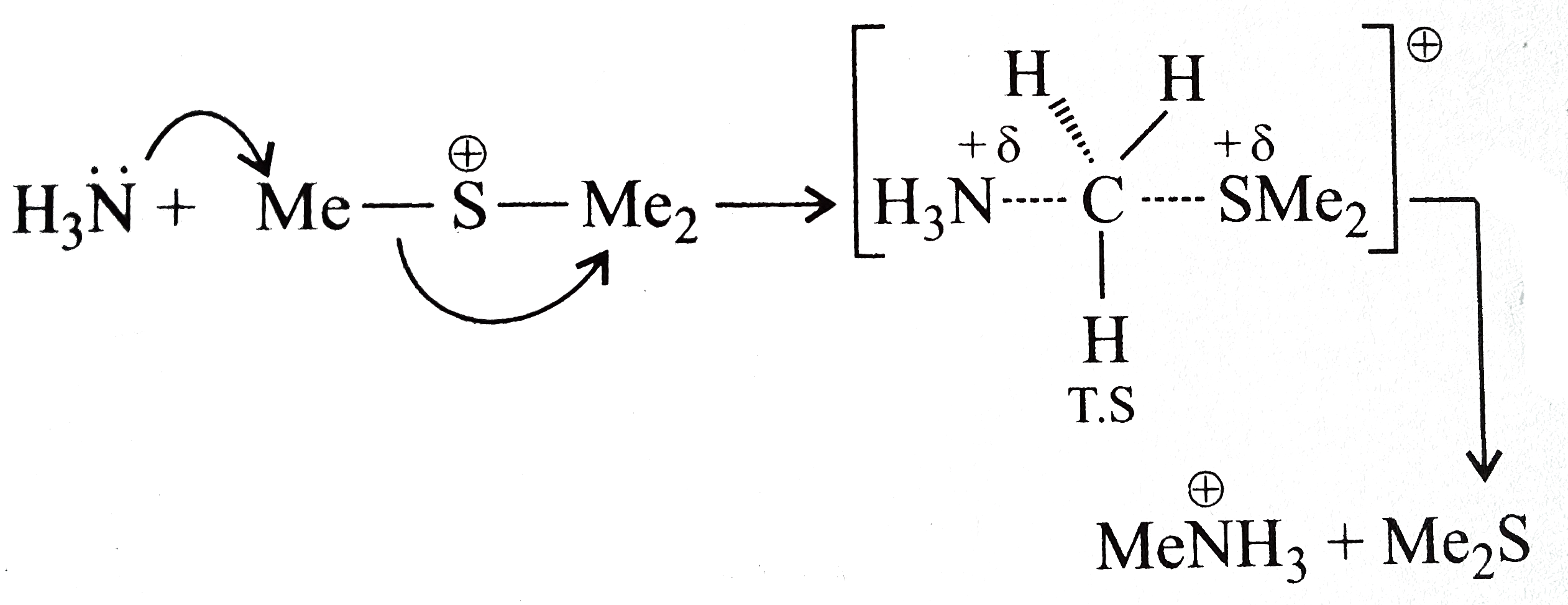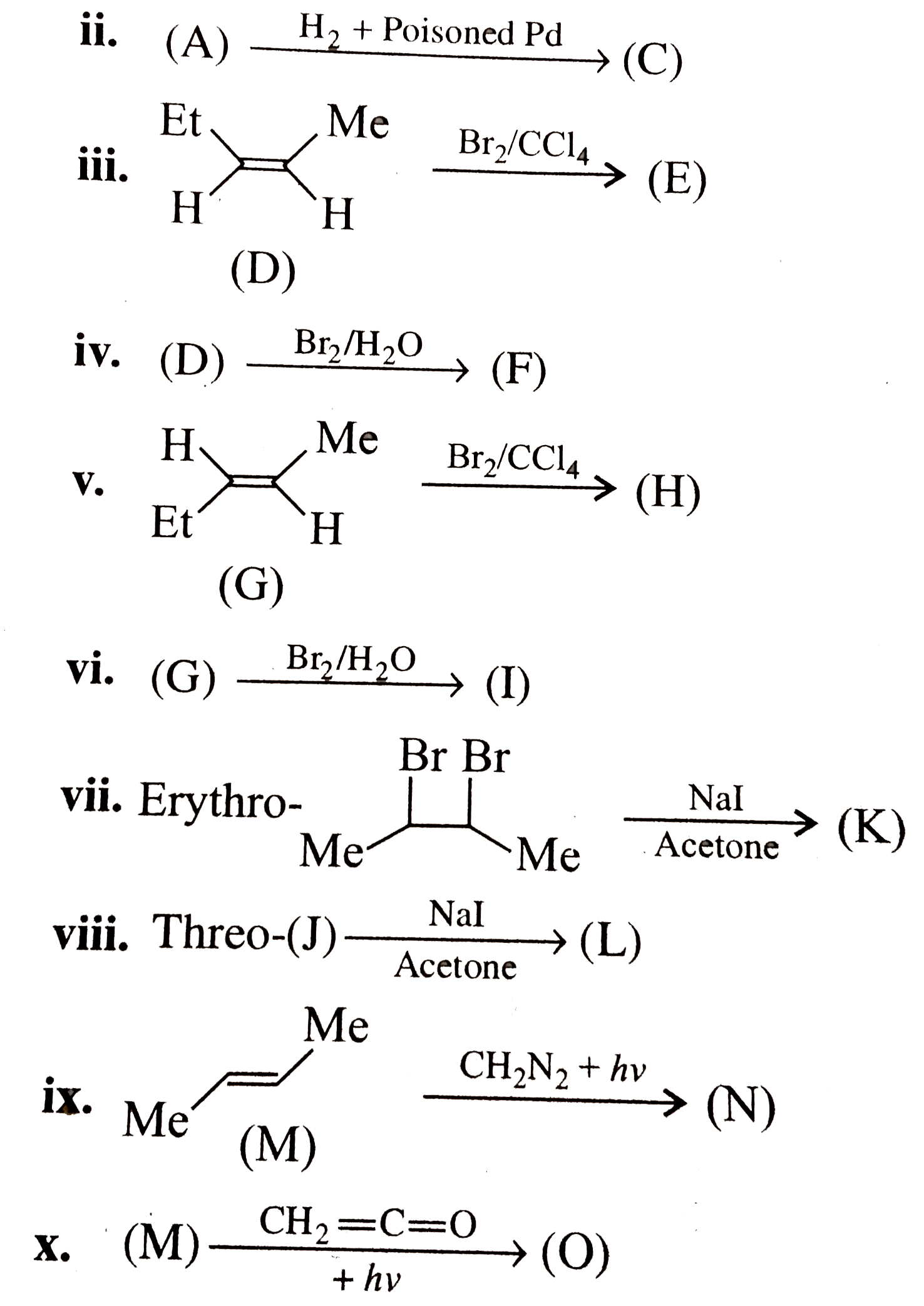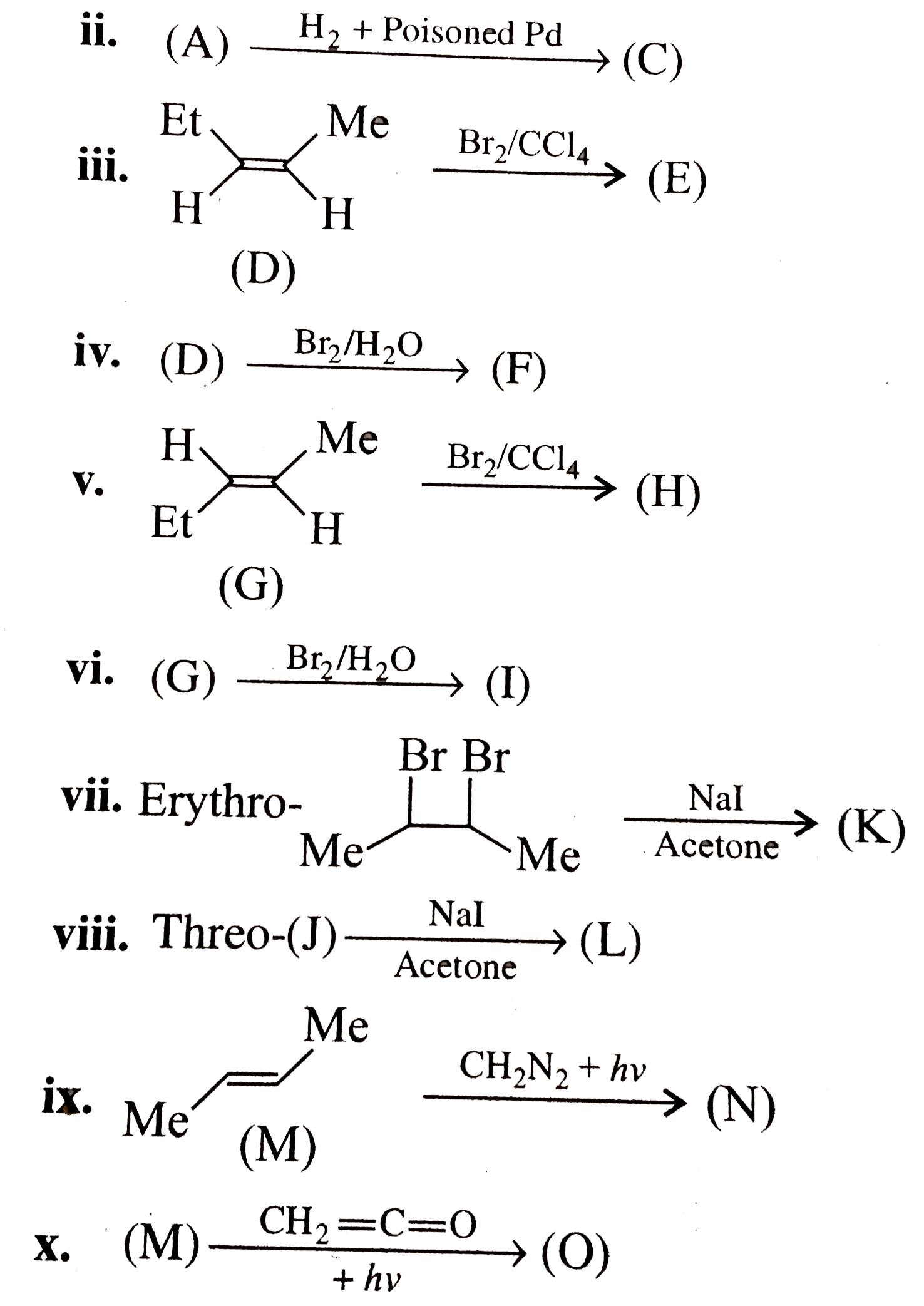Explain the effect of SN2 rates for the following reactions :
(a) Increasing the polarity of solvent.
(b) Show the T.S with all partial charges for each reaction type.
(I) Me2⊕S−Me+NH3→Me⊕NH3+Me2S
(II) MeI+NH3→Me⊕NH3+IӨ
(III) MeI+ӨOH→MeOH+IӨ
(IV) Me2S⊕−Me+ӨOH→MeOH+Me2S.
Video Solution
Text Solution
(I) 
The charge in the T.S is more diffused than the charge in the reactant (Me2S⊕Me), hence the increase in solvent polarity stabilises the reactant more than the T.S So the rate decrease.
(II) 
There is no charge either on the reactant or nucleophile, but T.S has δ -charges. Hence, an increase in solvent polarity stabilises the T.S., lowers Eact, and increase the rate.
(III) 
This case is similar to (I). Therefore is a changed nucleophile and diffused charge T.S., and the rate is decreased.
(IV) 
Both the reactant and nucleophile are charge. These are more stabilised by increasing solvent polarity than the T.S whose charge is much more diffused and hence there is a sharp decrease in the rate of SN2 reaction.
|
Topper's Solved these Questions
- ORGANIC REACTION MECHANISMBOOK - CENGAGE CHEMISTRYCHAPTER - ORGANIC REACTION MECHANISMEXERCISE - Solved Example
33 Videos
- ORGANIC REACTION MECHANISMBOOK - CENGAGE CHEMISTRYCHAPTER - ORGANIC REACTION MECHANISMEXERCISE - Subjective
19 Videos
- NCERT BASED EXERCISEBOOK - CENGAGE CHEMISTRYCHAPTER - NCERT BASED EXERCISEEXERCISE - Chemical Equilibrium
72 Videos
- P-BLOCK GROUP 13 - BORON FAMILYBOOK - CENGAGE CHEMISTRYCHAPTER - P-BLOCK GROUP 13 - BORON FAMILYEXERCISE - Exercise Archives (Subjecive)
9 Videos
Similar Questions
Knowledge Check
What is the correct order of decreasing stability of the following cations
I. CH3−⊕CH−CH3 II. CH3−⊕CH−OCH3
III. CH3−⊕CH−CH2−OCH3AII>I>IIIBII>III>ICIII>I>IIDI>II>IIIAssertion(A):Me3−C is more stable than −CH3.
The +I effect of the three Me groups in Me3−C tends to make it more stable than −CH3.AIf both (A) and ( R) are true and ( R) is the correct explanation of (A).BIf both (A) and ( R) are true but ( R) is not correct explanation of (A).CIf (A) is true but ( R) is false.DIf (A) is false but ( R) if true.Consider the following reactions :
IMe−≡(A)−MeNa+Liq.NH3−−−−−−−−→EtOH(B)
 .
.
Which statement is wrong about the reactions (i) and (ii) ?AThe product (B) is trans-but-2-ene and (c) is cis-but-2-ene.BThe product (B) is cis-but-2-ene and (C) is trans-but-2-ene.CThe formation of (B) and (c) takes place by anti-and syn-addition of H2, respectively.DIn the formation of (B), one of the intermediate species is radical anion.
Consider the following reactions :
IMe−≡(A)−MeNa+Liq.NH3−−−−−−−−→EtOH(B)
 .
.
Which statement is wrong about the reactions (ix) and (x) ?
View SolutionWhich of the compound in each of the following pairs will react faster in SN2 reaction with ӨOH
(A) MeBr(I)andMeI(II)
(B) Me3C−Cl(III)andMeCl(IV)
 .
.
View SolutionConsider the following reactions :
IMe−≡(A)−MeNa+Liq.NH3−−−−−−−−→EtOH(B)
 .
.
Which statement is wrong about the reactions (iii) and (iv) ?
View SolutionConsider the following reactions :
IMe−≡(A)−MeNa+Liq.NH3−−−−−−−−→EtOH(B)
 .
.
Which statement is wrong about the reaction (v) and (vi) ?
View SolutionIdentify the final product (Z) in the following sequence of reactions :
Me2C=O+HCN→(X)H3O+−−−→(Y)H2SO4−−−→
View Solution
